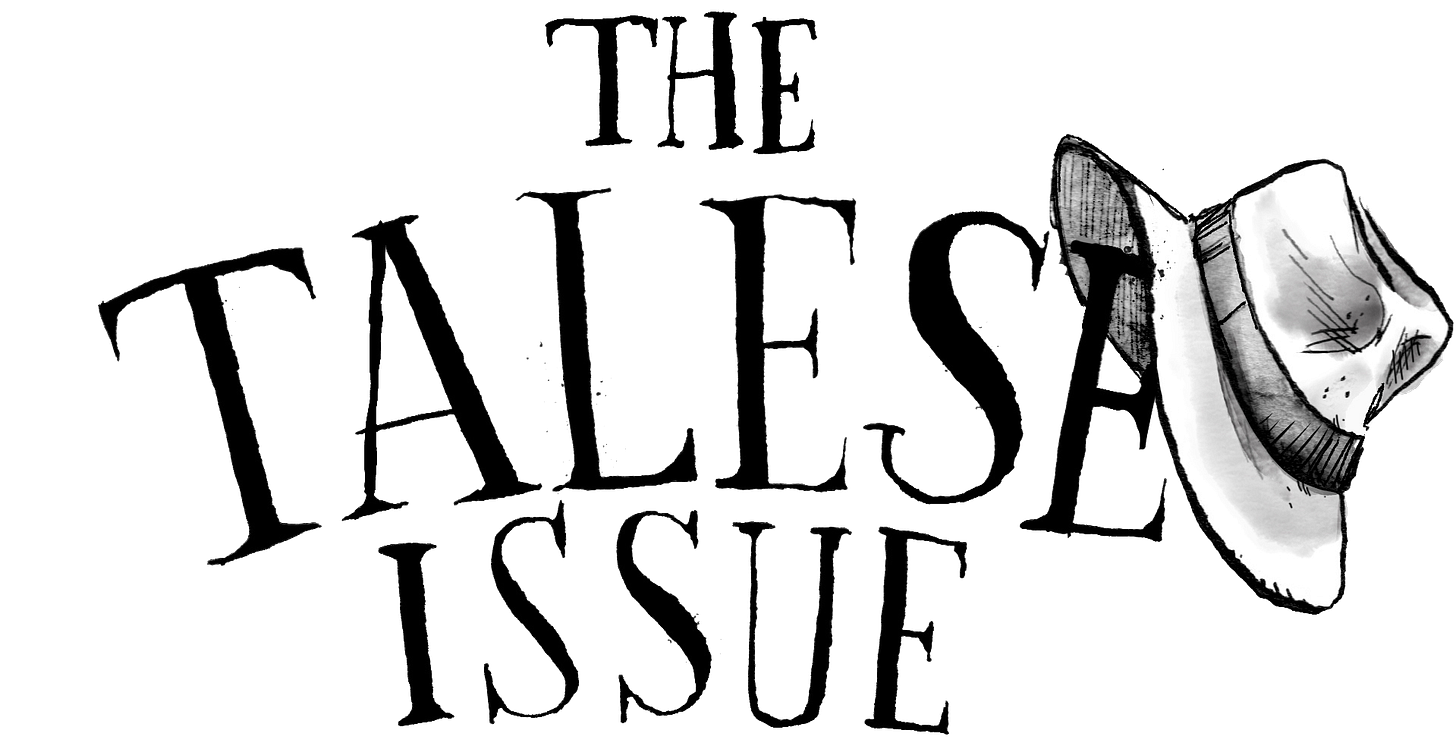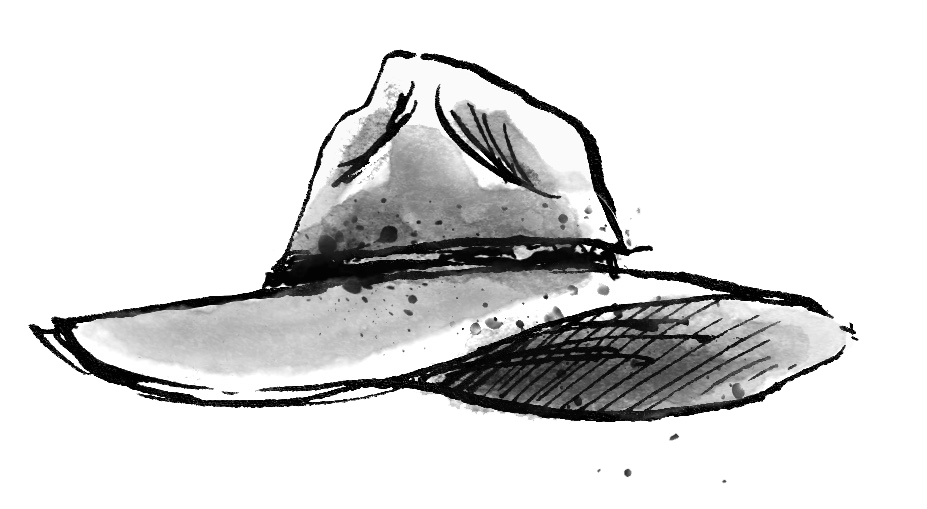PORTRAIT BY MAX VADUKUL
It’s hard to wrestle with Gay Talese. At 93, he is old but spry, and his sentences are so quietly, consistently effective that you may not realize he has you pinned.
Reading a new collection of his New York-themed reportage, A Town Without Time, I wondered if we had been taking Talese for granted, the way we took Gene Hackman for granted, or that one red sauce restaurant with the very good amatriciana that is supposed to never close — until, suddenly, it does. In its wake comes a new Chipotle. In literary terms, that translates into the latest batch of Iowa-educated essayists of the Leslie Jamison variety, burrowing ever deeper into their own pathologies. You start to wonder, reading their work, if some of them have ever been outside.
Talese has been outside. Granted, he has not ventured far. Born in Ocean City, New Jersey, he has lived in the same Upper East Side townhouse for several decades. During his more than 70-year career, which included tenures at the New York Times and Esquire, he chronicled life in the city with the joy and curiosity it deserves. It goes without saying, we need investigative reporters and muckrakers. Even a polemicist or two. Just as desperately, however, we need someone who can take this enormous maze of concrete and steel brimming with humanity, the Venezuelan woman selling Starburst in the subway, the couple in cowboy hats taking selfies at Ground Zero, the day drinkers at a West Village brunch spot, teens dancing in the Battery — take all of it, organize it in their mind, and then reanimate this entire insane procession called New York on the page, this time with words alone to convey how the setting sun plays on the Hudson, how Central Park sounds at night after it snows. We won’t get any closer to alchemy than that.
The uniqueness of Talese’s talent is evident in the book’s opener, “New York Is a City of Things Unnoticed,” from 1960, an ode to the city as memorable as the Gershwin-scored opening of Woody Allen’s Manhattan. Like a Gershwin composition, Talese’s writing bubbles over with irreverence: “Most popcorn chewers at Yankee Stadium stop chewing momentarily just before the pitch.” How does he . . . jeez, of course they do!
It goes on like this, lovely from start to finish: “Rain ruins the mascara on the eyes of fashion models who cannot find cabs; and rain makes it a lonely day for Times Square’s recruiting sergeants, demonstrators, bootblacks, and burglars—who all tend to lose their enthusiasm when wet.” To put it bluntly, “Things Unnoticed” is one of the best things anyone ever wrote about New York.
That essay shares space between the new book’s covers with much better-known works: the classic Frank Sinatra number, the Joe Bonanno kidnapping business, the foray into the kingdom of the New York Times. If I say less about these, it is only because so much has been said already. Really, the only thing that should be said is that they have lost none of their power over the years.
There’s also the riveting book-length chronicle of how the Verrazzano-Narrows Bridge between Brooklyn and Staten Island came to be, reprinted here in full.
The dramatic climax is the demise of Gerard McKee, 19, one of three workers who died building the bridge: “The men watched him fall, feet first for about one hundred feet. Then his body tilted forward.” One of the men on the bridge could see “McKee’s shirt blowing off and could see McKee’s bare back, white against the dark sea.” Reading this passage summoned one of Ernest Hemingway’s classic bullfighting scenes, all movement and mortality, language in a dance with death.
Together, the works collected here convincingly make the case that Talese is “one of the last of the journalistic literary lions left,” as New York Times Styles reporter and city correspondent Alex Vadukul, himself a fine young scribe, puts it in the book’s gracious introduction. “There’s no practitioner of narrative nonfiction who doesn’t have to reckon with his work.”
It is notable that in the pantheon of New Journalism, Talese is the only one who never seriously aspired to be a novelist. The journalist can be an egoist, of course, but his soaring ego cannot escape the gravitational pull of reality. Unless he is going to make stuff up, he is expected to subordinate his own vision to what he actually sees. Not every Brooklyn murder is Shakespearean. Not every City Hall martinet is Stalin with a parking placard. Sometimes the world is no more or less than what it is.
The novelist heeds no such limit on his creativity. Certainly most of Talese’s peers did not, even when the thing they were doing was supposedly journalism, not fiction. The novelist is all ego, all the time, especially if he is one of the great white males of the postwar era (hence my use of the male pronoun, despite the fact that there were superb female practitioners of New Journalism, and Joan Didion was far from the only one).
A novel by Norman Mailer, much like a reported essay by Norman Mailer, is inevitably about Norman Mailer. The book about the Pentagon is really about Norman Mailer, who is the protagonist of that classic nonfiction novel, The Armies of the Night, in which he writes about himself in the third person, inventing some things while reporting others. His essay about John F. Kennedy, “Superman Comes to the Supermarket,” is very much about Norman Mailer and his Brooklyn-bred fantasy of the WASP ideal. “The White Negro,” his controversial essay about postwar culture? Oh, that’s about Mailer, too, his own anxieties elevated to “existential” concerns of national significance.
Hunter S. Thompson, also in the novelist-journalist mold, dissolved all categories and distinctions in his acid-trip masterpieces. Whether he is talking football with Richard Nixon or making the rounds at a cop convention in Las Vegas, he is always both circusmaster and circus. So is Tom Wolfe, though his spectacle is more refined, the circusmaster better dressed, and is that martini cart going to come around again?
Didion once observed that her “only advantage as a reporter is that I am so physically small, so temperamentally unobtrusive” that subjects did not realize what they were subjecting themselves to. Talese is not a small woman. He is tall and always sharply dressed. And yet you get a sense from his essays that he is always ready to meet his subjects on their own terms, to witness without rendering judgement.
That allows Talese to see what others cannot, as in the classic Sinatra essay:
He has everything, he cannot sleep, he gives nice gifts, he is not happy, but he would not trade, even for happiness, what he is . . .
He is a piece of our past—but only we have aged, he hasn’t . . . we are dogged by domesticity, he isn’t . . . we have compunctions, he doesn’t . . . it is our fault, not his . . .
He controls the menus of every Italian restaurant in Los Angeles; if you want North Italian cooking, fly to Milan . . .
Men follow him, imitate him, fight to be near him . . .
There is one other thing that should be said about Talese, and that is he is funny, as virtually every great writer is. He is quietly funny, in that understated way of his, but funny all the same. Very few writers are funny today, at least those I can think of. They seem to think that because we live in a serious time, humor is forbidden, when, in fact, humor is exactly what a serious time needs. Anyway, here is Talese on Alden Whitman, once the chief obituary writer of the New York Times:
He is a precise, unemotional man. While death obsessed Hemingway and diminished John Donne, it provides Alden Whitman with a five-day-a-week job that he likes very much.
I don’t know if writing can be taught — though millions of dollars are devoted annually to the premise that it can — but I am sure that writing like that cannot be. Because you cannot teach another person to see.
Several months ago, Talese was feted at a glitzy event held at the McNally Jackson bookstore in the Seaport. Throngs of journalists from the New York Times and young writers from other publications were in attendance. It did not seem that they had come out of some grim sense of professional duty, as is sometimes the case at such events. Graydon Carter, the former Vanity Fair editor, the Times reporter Guy Trebay, and the actress Annie Hamilton all read from Talese’s reportage. None of it felt like they were dusting off antiques. There followed a conversation between Vadukul and the writer he has revered for years. Like his writing, Talese was electric and alive.
If there was a feeling of sadness, it was not for Talese himself but for the heyday of journalism, which Talese lived through and chronicled — and which is now very much gone. After the gathering was done, men and women who have written about and interviewed some of the most powerful people in the world patiently stood in line to get their copies of A Town Without Time autographed.
I was among them. Talese graciously signed my copy of the book, and then I went out into the New York night, where “troops of cats patrol the waterfront piers” and “some mannequins are attacked by perverts” and “pigeons control Park Avenue and strut unchallenged in the middle of the street” and “at 5 a.m. the Broadway regulars have gone home or to all-night coffee shops where, under the glaring light, you see their whiskers and wear.”
What a town.
Alexander Nazaryan writes about culture, politics, and science.








Greetings my friend, I’ve been seeing your posts quite a lot in my short time on Substack, I wanted to say keep it up!, there very interesting.
While I’m here, I share a look at the more obscure parts of history, through a philosophic lens, and focusing on historic books.
Here’s one you may enjoy on rather controversial empire called Tartaria:
https://open.substack.com/pub/jordannuttall/p/tartaria-in-the-17th-century?r=4f55i2&utm_medium=ios
Phenomenal.